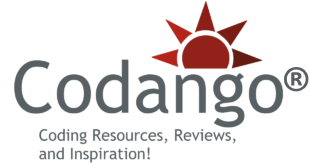In today’s fast-paced business world, collaboration tools are everywhere. Slack, Microsoft Teams, and Discord have popularized channels as the backbone of digital communication. Yet, while channels organize conversations by topic, department, or project, they often fall short when it comes to context, actionable insights, and real-time productivity.
Enter Pulses — a revolutionary way to rethink collaboration from the ground up.
The Limitations of Channels
Channels are designed to separate conversations by subject, but they come with challenges:
Fragmented context: **Threads are scattered, important files are buried, and decisions get lost in the noise.
**Action ambiguity: **Conversations don’t automatically translate into tasks, action items, or follow-ups.
**Onboarding struggles: New team members often need to dig through months of channel history to understand context.
Information silos: Critical knowledge may live only in chat threads, inaccessible to those who need it most.
These problems aren’t caused by teams — they’re caused by the structure of traditional channels. Simply put, channels organize conversations, but they don’t optimize collaboration.
What Are Pulses?
Pulses are the next evolution of team communication. Unlike channels, Pulses are living ecosystems where conversations, files, tasks, and decisions exist together. They are designed to:
Capture the full context of projects in one place.
Automatically link action items, decisions, and key documents.
Enable new team members to onboard instantly with full project history.
Reduce repetitive follow-ups and miscommunication.
With Pulses, collaboration is no longer about scrolling through endless threads. Instead, it’s about working efficiently with context-driven intelligence.
How Pulses Improve Productivity
Centralized Knowledge: Every conversation, document, and task is stored in a single location. Your team spends less time hunting for files and more time executing.
Actionable Conversations: Pulses automatically highlight decisions, assign action items, and track deadlines, reducing the need for follow-ups and status meetings.
Instant Onboarding: New hires can access the full history of a Pulse, getting up to speed in minutes instead of days.
Context-Rich Communication: Pulses allow AI-powered summarization and tagging, making every interaction searchable and meaningful.
Reduced Noise: Instead of drowning in notifications across multiple channels, teams focus on what matters most — the work itself.
Pulses vs. Channels: A Side-by-Side Comparision
Why Teams Are Switching to Pulse-Based Workspaces
Modern teams crave productivity, clarity, and speed. Pulses provide all three. By replacing traditional channels with Pulse-driven workspaces, companies can:
Reduce wasted time hunting for information.
Empower teams to make faster, more informed decisions.
Capture organizational knowledge as a living resource.
Align remote and hybrid teams without relying on memory or manual notes.
In short, Pulses transform digital collaboration into actionable intelligence.
Conclusion
Channels were a step forward in digital communication, but they were never designed to handle the complexity of modern work. Pulses rethink collaboration from the ground up, unifying conversations, tasks, and knowledge in one intelligent workspace.
**Address —
Company Name — Nexy
Location- Netherlands
Website — https://nexy.works/**



